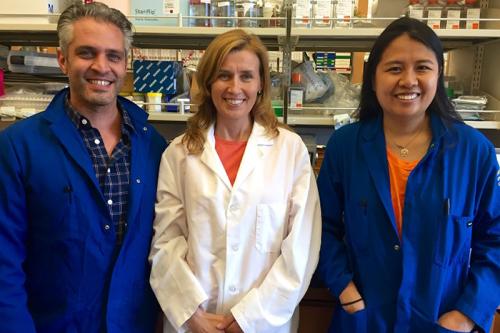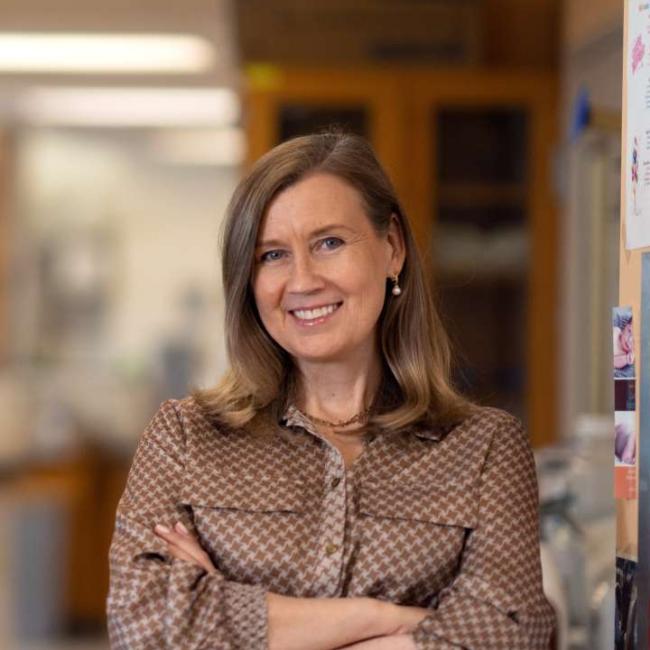
Stem cell advance could be key step toward treating deadly blood diseases
Scientists at the UCLA Eli and Edythe Broad Center of Regenerative Medicine and Stem Cell Research have made several discoveries that are critically important to understanding how blood stem cells are created and maintained — both in the body and in the laboratory.
The findings may lead to the creation of a new source of life-saving blood-forming stem cells, which could help people with a wide range of blood diseases by reducing many of the risks of bone marrow transplants. Thousands of people each year in the U.S. alone are diagnosed with diseases that could be treated with the procedure.
The study, led by senior author Dr. Hanna Mikkola and first co-authors Vincenzo Calvanese and Diana Dou, was published in the journal Nature Cell Biology.
Blood-forming stem cells, or hematopoietic stem cells, are found in the bone marrow and can create any type of blood cell. The researchers pinpointed the function of a cluster of specialized genes that play a key role in creating and preserving hematopoietic stem cells and identified the process by which those genes are activated during human development and in the laboratory.
For decades, doctors have used bone marrow transplants to treat people with diseases of the blood or immune system. One complicating factor has always been that certain proteins in the donor’s and recipient’s cells must match so that the donor’s immune system doesn’t reject the transplant. But finding a perfect match can be difficult, and the process is risky for both donors and recipients.
The UCLA research could provide a way to create patient-specific hematopoietic stem cells, which would reduce some of the challenges associated with bone marrow transplants.
“Our work focuses on finding a way to generate a supply of these life-saving hematopoietic stem cells in the lab so that they are a perfect match to the patient in need of a transplant,” said Mikkola, a professor of molecular, cell and developmental biology in the UCLA College and a member of the UCLA Jonsson Comprehensive Cancer Center. “One big challenge is that when we try to create hematopoietic stem cells from pluripotent stem cells in the lab, they don’t acquire the same abilities of the real hematopoietic stem cells found in the body.”
Pluripotent stem cells are capable of becoming any cell type in the human body. However, some tissue-specific stem cells, such as hematopoietic stem cells, have been difficult to derive from pluripotent stem cells, creating a fundamental challenge associated with the creation of stem cell-based medical treatments.
Mikkola and the research team first tried to create hematopoietic stem cells in the lab from pluripotent stem cells. When they compared the lab-created cells to the hematopoietic stem cells found in the body, they found that an important cluster of genes, called HOXA genes, weren’t activated in the lab-created cells. They also showed that HOXA genes help hematopoietic stem cells maintain their stem cell attributes, such as the ability to generate more copies of themselves, which is a defining characteristic of any kind of stem cell.
“Without the ability to self-renew, hematopoietic stem cells cannot be used for transplantation therapies,” said Calvanese, an assistant project scientist in Mikkola’s lab. “Our findings show that the activation of HOXA genes can be used as a marker for hematopoietic stem cells that have acquired the capacity to renew themselves.”
The researchers’ next challenge was to pinpoint the naturally occurring process that activates HOXA genes, so they could try to replicate the process in the lab. They found that mimicking the effects of retinoic acid, a compound derived from vitamin A, acts like a switch that turns on the HOXA genes during the development of hematopoietic stem cells.
“Inducing retinoic acid activity at a very specific time in cell development makes our lab-created cells more similar to the real hematopoietic stem cells found in the body,” said Dou, a graduate student in Mikkola’s lab. “This is an important step forward as we work to develop hematopoietic stem cells for transplantation therapies for life-threatening blood diseases.”
The researchers’ next step will be to refine the process they’ve developed in order to produce lab-created hematopoietic stem cells that have — and maintain — all of the functions of human hematopoietic stem cells.
The research was supported by grants from the California Institute for Regenerative Medicine, the National Institutes of Health (RO1 DK100959, P01 GM081621, PO1 HL073104 and HL086345), the National Science Foundation Graduate Research Fellowship Program, the Leukemia and Lymphoma Society, and the UCLA Broad Stem Cell Research Center and its training programs, which are supported in part by the Shaffer Family Foundation and the Rose Hills Foundation.
